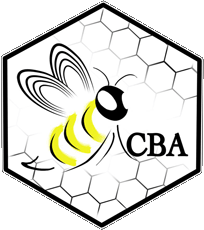More and more gardeners are anxious to do their part to help the bees by adding to the shrinking inventory of flower-rich habitat in their area. In return, the bees will pollinate your flowers, providing a bountiful harvest of fruits, seeds and vegetables as well as the joy of watching them up close. Here are some helpful tips to keep in mind as you grow your bee-friendly garden:
Rethink your lawn. Replace part or all of your front lawn grass with flowering plants, which provides food and habitat for bees and other wildlife.
Plant native flowers. Native flowers help feed your bees and are uniquely adapted to your region. Try to use native flowers to which local bees are especially adapted. You can also visit the websites of regional botanic gardens and plant nurseries for more info on native bee-friendly plants.
Select single flower tops such as daisies and marigolds, rather than double flower tops such as double impatiens. Double headed flowers look showy but produce much less nectar and make it much more difficult for bees to access pollen.
Skip the highly hybridized plants, which have been bred not to seed and thus produce very little pollen for bees.
Plan for blooms season-round. Plant at least three different types of flowers to ensure blooms through as many seasons as possible, thus providing bees with a constant source of food. For example:
Crocus, hyacinth, borage, calendula, and wild lilac provide enticing spring blooms.
Bees feast on bee balm, cosmos, echinacea, snapdragons foxglove, and hosta in the summer.
For fall, zinnias, sedum, asters, witch hazel and goldenrod are late bloomers that will tempt foragers.
Build homes for native bees. Leave a patch of the garden in a sunny spot uncultivated for native bees that burrow. Some native bees also need access to soil surface for nesting. For wood- and stem-nesting bees, this means piles of branches, bamboo sections, hollow reeds, or nesting blocks made out of untreated wood. Mason bees need a source of water and mud, and many kinds of bees are attracted to weedy, untended hedgerows.
Only use natural pesticides and fertilizers. Avoid using herbicides or pesticides in the garden. They not only can be toxic to bees but also are best not introduced to children or adults that visit your garden. Ladybugs, spiders, and praying mantises will naturally keep pest populations in check.
Create a “bee bath.” Bees need a place to get fresh, clean water. Fill a shallow container of water with pebbles or twigs for the bees to land on while drinking. Make sure to maintain the container full of fresh water to ensure that they know they can return to the same spot every day.
Live in a home without a garden? You need only a small plot of land—it can even be a window container or rooftop—to create an inviting oasis for bees. Every little bit can help to nurture bees and other pollinators.
Edited from the Honeybee Conservancy: http://thehoneybeeconservancy.org/act-today-2/plant-a-bee-garden/

